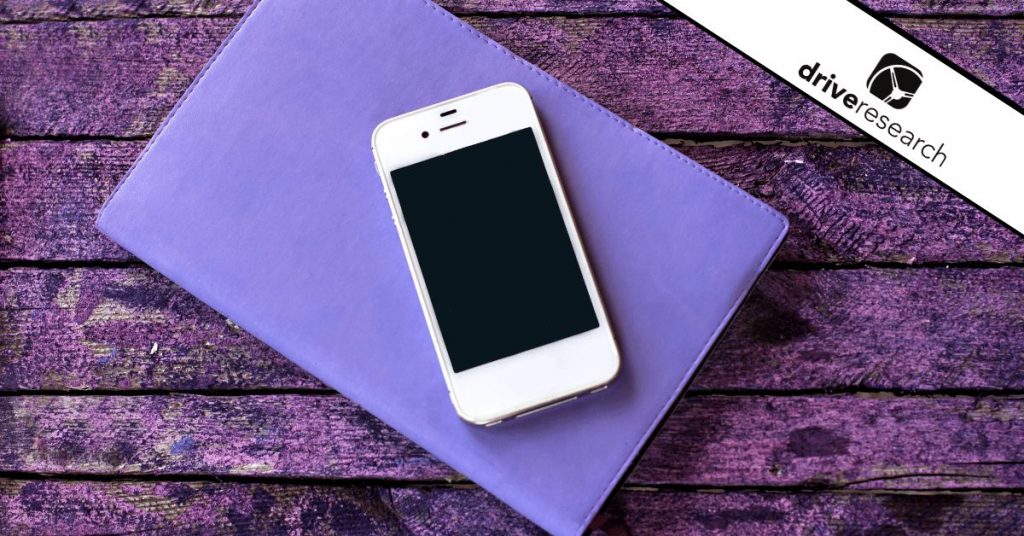
Are your market research methodologies stale? Focus groups have been around since the Mad Men era of advertising in the 1950s and 1960s.
So much has changed since then. Marketing has evolved, communication has evolved, consumer behavior has evolved, why hasn’t your market research?
The mobile market research (MMR) movement is growing at an incredible adoption rate over the past 12 years. Drive Research talked about 4 key drivers to the growth of mobile years ago and the trend has only persisted.
These drivers include faster turnaround time, access to low-cost platforms, growth in mobile device ownership, and incredible ROI.
However, much of the discussion around MMR is quantitative? But what about qualitative?
Enter mobile diaries.
In this blog post, our market research company defines mobile diaries, their benefits, and a few examples of how to utilize this methodology.
What is a Mobile Diary in Market Research?
Mobile diaries put qualitative data in the palm of your hands. What is a mobile diary? Luckily, the name gives a big hint.
Mobile diaries collect feedback from consumers and/or customers via a mobile format (i.e., mobile app, email, text, online forum, etc.) over a set period of time. Oftentimes, respondents are asked to complete a pre and post-survey to measure changes before and after completing the mobile diary fieldwork.
Benefits of Mobile Diaries
1. Agile Qualitative Research
Mobile diaries are what’s called “agile” qualitative research. Qualitative research is a must-have for organizations looking for in-depth feedback.
Qualitative market research digs into and explores topics. It’s important to remember that qualitative research is subjective. Once a large enough sample size is gathered it can be viewed as reliable and measurable.
Wondering if qualitative research is right for you? Learn more about qualitative versus quantitative research.
2. In-the-Moment Feedback
Instead of scheduling interviews or focus groups, mobile diaries allow researchers to gather qualitative data in the moment, interactively, and in the palm of respondents’ hands.
An important advantage to mobile diaries is their ability to continually reach respondents through a preferred and easily accessible medium, making attaining feedback easier.
3. Track Consumer Behaviors Over Time
Mobile diaries also allow researchers to understand why opinions change, provide insight on customer/consumer habits, track usage, develop in-depth personas, and collect detailed feedback.
Notice how each of these benefits hinge on exploring habits and experiences. This is what makes mobile diaries powerful.
If you’re looking to poke around the mind of customers to understand how they view your brand — mobile diaries are the best fit for the job.
Examples of Mobile Diaries in Market Research
Each of the examples below is custom market research methodologies, meaning specific research objectives can be addressed (e.g., increase in purchases, increase in the number of visits, etc.).
In every example, mobile diaries provide the opportunity to explore and dive deeper into attitudes, beliefs, and values.
Opening up dialogue is the first step to creating customer personas, storytelling, customer experience paths, and more data-driven decision-making.
Mobile Diary Example #1
A grocery store is looking for insight on their customer experience (CX) to understand drivers to purchase, purchasing habits, and in-store experience.
After selecting an ideal mix of participants, each is expected to complete an online mobile diary entry after every visit.
As a means for tracking and sending invites to complete the online form, participants are asked to use their grocery store member card.
This way, after each visit, shoppers are sent an email and/or text asking them to complete the mobile diary form.
Mobile Diary Example #2
A coffee roaster wants to learn more about its customers’ habits.
A select number of customers are asked to record coffee drinking habits including details such as
- The time of day
- Location (e.g., home, work, in-store, etc.)
- Brand
- Flavor of coffee
- Amount
- Overall satisfaction with each experience
This feedback is tracked in a mobile diary.
Mobile Diary Example #3
A news outlet is rebranding and updating its overall look. Since it focuses on reaching customers through a mobile app, it wants to understand how the customer experience changes as the updates are rolled out.
A select number of customers are asked to respond to several questions after opening the app and using it for at least 5 minutes.
The questions are sent directly to respondents using the app and focus on how the updates affect overall satisfaction, problem identification, and other feedback on the user experience (UX).
Utilize Mobile Diaries with Drive Research
Everyone (or virtually everyone) has a mobile device on them or near them at all times. As a result, the market research industry began to take advantage of such penetration in the market.
Ready to unlock data using mobile diaries? Drive Research can help.
Our full-service market research company serves businesses across the country to deliver custom research services in several different industries, markets, and areas of focus. Contact Drive Research to get started.



